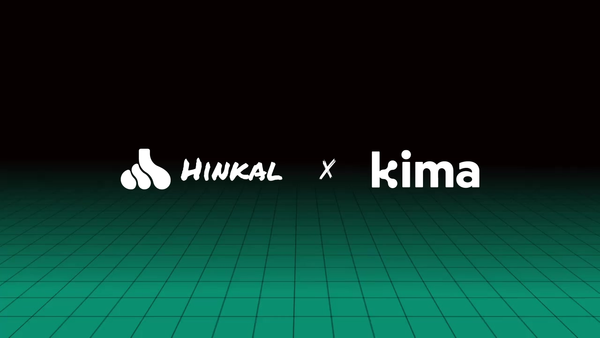Discreet Liquidations: Selling tokens with TradFi standards

Introduction
For blockchains to achieve institutional adoption, they should have all the best qualities of both traditional finance and blockchains.
There are three layers where blockchains radically lack the privacy that exists in traditional finance by default.
- On-chain wallet address. This is the most vulnerable part as it represents an ID/bank account that everyone can see real-time, including all previous transactions.
- RPC providers. Your transactions are submitted in mempool by the RPC provider. They know all your data including the IP address and machine you're using.
- Mempool. After a transaction is submitted, by default it goes to the public mempool. So before it goes on-chain, everyone can see the wallet there.
With more traditional funds moving on-chain, we will see problems increasing with the public nature of their assets, similar to what we saw with Blackrock tokenized fund. People started sending tornado cash tokens and other meme tokens. From this point, every transaction from the wallet is traced and monitored.
For the on-chain actors, lack of privacy already leads to problems. For example, when a fund wants to sell sizable amounts of tokens using DEXs, not only size but also wallets are monitored both from the mempool and when transaction goes on-chain. In theory, it’s also monitored by RPC provider, but we tend to trust the providers.
As Re7 Capital, an investor in Hinkal, suggests: “A compliant solution enabling discrete liquidations without disclosing transaction data is necessary and what we were looking for a long time”.
Up to date, liquidations for significant amounts of tokens could only occur through OTC deals. Involving CEXs and intermediate wallets, the process can take too long. Furthermore, the cost of liquidation is not insignificant, ranging from 50 to 250 bps, greatly reducing profits. All information is visible on-chain, leaving the liquidators vulnerable to market impact. Lastly, it’s important to note that OTC deals also involve third-party risks, as liquidators are always dependent on the integrity of the parties involved in the transaction.
Therefore, the solution to this problem should satisfy 3 criteria for privacy:
- On-chain wallet shouldn’t be traceable
- RPC provider shouldn’t see the transaction owner (IP address and device)
- Validators in the mempool shouldn’t see the wallet of the transaction originator
There’s a lot of experimentation to solve this problem using novel blockchain techniques, such as fully homomorphic encryption, trusted execution environment, ZKVM/EVM.
But let’s be honest here, it took 9 years for a few institutions to get comfortable with Ethereum, the most secure and expensive chain. And the battle hasn’t been won yet - we still yet to see major asset managers moving their assets there. So, we can take this for granted - no other chain will be mass-adopted by institutions in the foreseeable future. Needless to say, privacy chains like Aleo are 10+ years from this point of view.
Now let’s find the solution that can enable privacy primitives on Ethereum.
- On-chain wallet privacy. There’s no other way to solve this problem other than using shielded pools with ZK and stealth address infrastructure.
- Shielded pool allows you to have a truly private address that no one can see on-chain.
- ZK-proofs allow you to prove that you qualify for a transaction without revealing the ownership details.
- Stealth addresses allow you to keep your balances clean without overpaying for transactions.
What about compliance? That’s probably the question you’d like to ask. And, of course, there is a way to guarantee it before entering the shielded pool. Using ZK proofs to verify ownership of a “compliance check” without revealing the owner.
- RPC solution.
- There are privacy RPC providers, such as (PancakeSwap Private RPC, RPCh, Ethermine), where your metadata is private by default
- Another solution is using whitelisted relayers to submit the transaction data.
- Mempool solution.
- Using private mempools.
- Using public mempools, but with relayers, so no one can see the actual wallet performing the transaction.
There’s a way to meet institutional adoption without sacrificing the beloved private UX/UI they have in traditional finance and this was already done by Hinkal.
Decentralized and discreet OTC solution
Hinkal is an institutional-grade protocol designed to give users full control over their on-chain data, mirroring the secure standards of traditional finance.
It provides multiple layers of protection for transaction data. To achieve this, Hinkal uses a combination of ZK proofs, stealth addresses, and relayers. Users can deposit any ERC-20 token to their discreet accounts and transact through Hinkal. They can either send funds to a new public wallet or interact with integrated dApps. The relayers transact on behalf of the users. What is visible on-chain is the Hinkal smart contracts and relayers. Only the owner of the account has visibility and control over the funds deposited.
This way, obfuscation of transaction data is achieved on 3 levels:
- Wallet level: Since funds are deposited into the smart contracts and transactions are handled by the relayers, liquidators’ activity can’t be traced by following their wallet. Nobody knows who liquidated those tokens.
- RPC level: After funds are deposited, there is no need for transaction signing. This prevents tracking by info collected by RPC providers.
- Mempool level: Since the relayers is posting the transactions, the link between the liquidator and the wallet is broken.
To ensure compliance with current regulatory requirements, and prevent illicit parties from accessing Hinkal’s services, the concept of "Reusable Attestations" has been introduced. Users prove with ZKPs that they passed a compliance check before they can use Hinkal.
Conclusion
Hinkal revolutionizes token liquidations by offering a secure, compliant and discreet solution. Utilizing ZK proofs, stealth addresses, and relayers, Hinkal ensures protection against copy-trading and front-running. Its integration with leading liquidity providers guarantees optimal pricing, while low relayer fees enhance cost efficiency. Proactive compliance measures and rigorous security audits further bolster its reliability. Hinkal provides a crucial bridge for institutional traders to confidently engage with liquidations in DeFi, meeting traditional finance standards.




